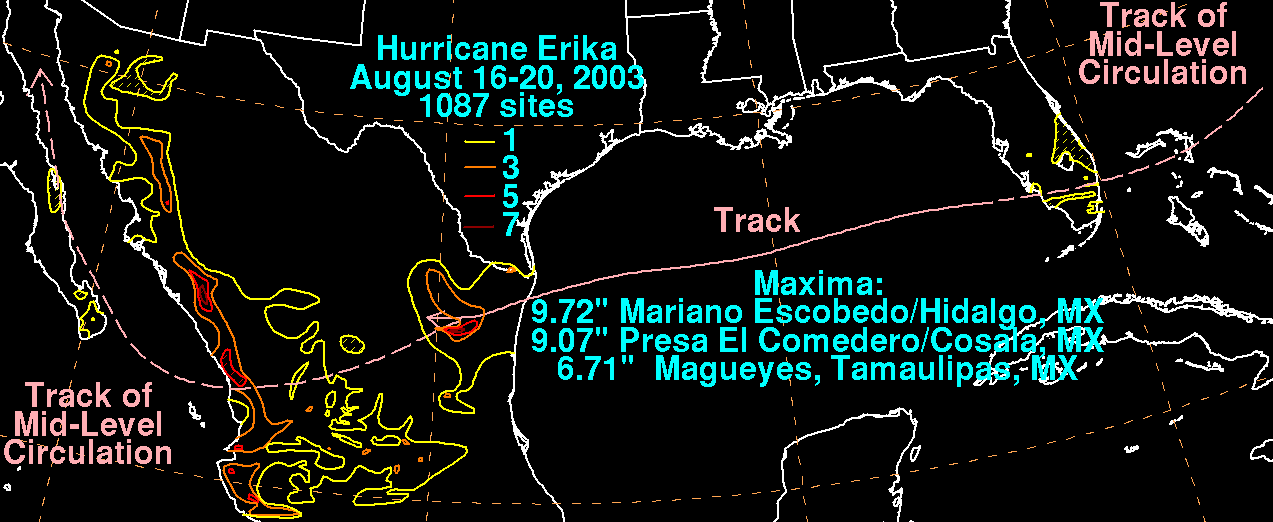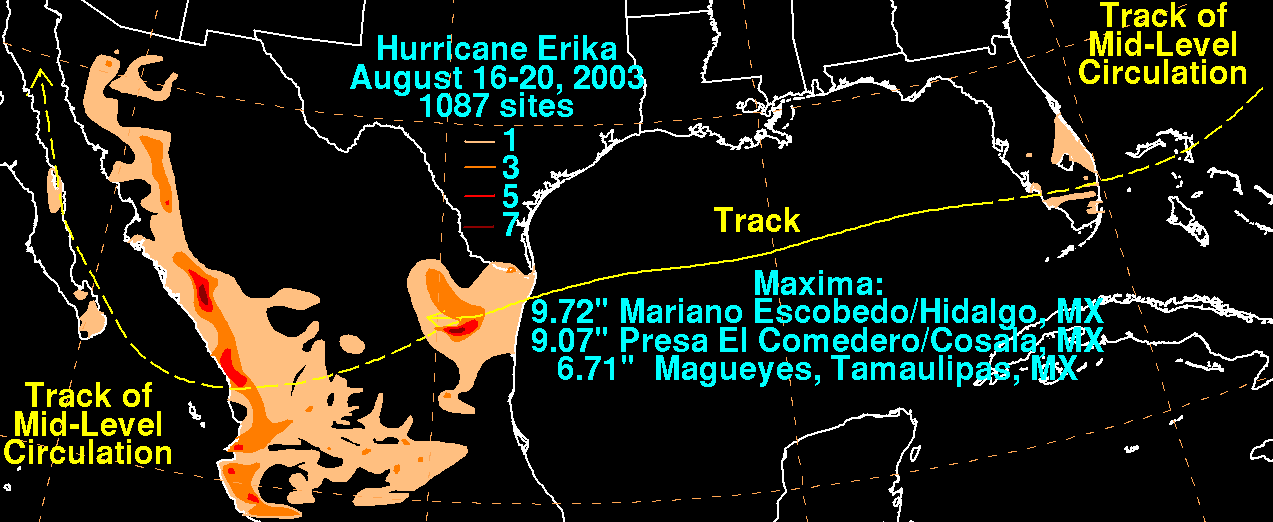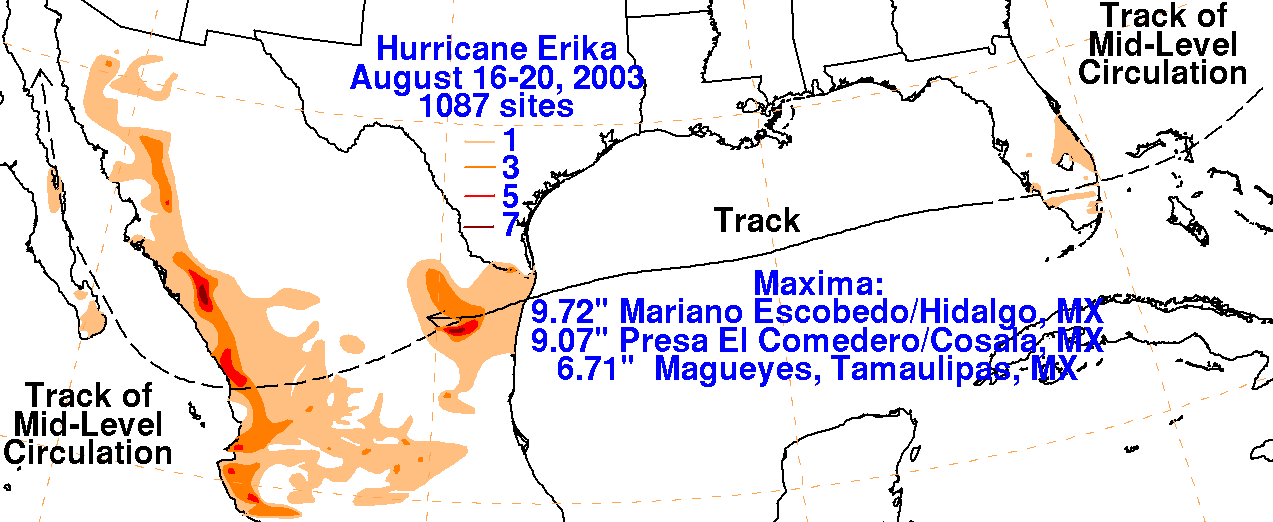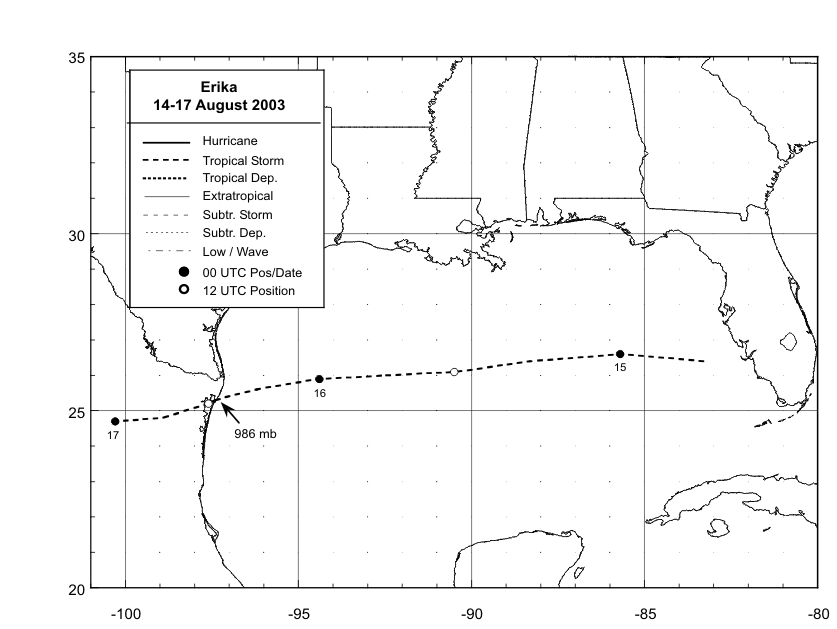The origin of this system was a weak low which developed along a
dying frontal zone about 1000 miles east
of Bermuda on August 8th. The system moved southwest, and
thunderstorms blossomed near the center when
it moved under an upper cyclone 650 miles southeast of Bermuda.
The two systems revolved around each other,
continuing to move west. By the 11th, the surface low opened up
into a trough about 400 miles south of Bermuda.
In an environment of high pressure, the convective system moved quickly
westward at around 20 mph for the next
three days, with a surface trough located a bit to the south of the
thunderstorm activity. Late on the 13th, near the
northwest Bahamas, convective increased further and the circulation
built down towards the surface. Early on the
14th, a low pressure center almost closed off near Key Largo before the
system moved through the Florida peninsula.
Once offshore the west coast of southwest Florida, a surface low
finally reformed that afternoon, causing the system
to instantly become a tropical storm due to the gale force winds
already being reported at the surface.
Erika continued to moved quickly to the west under a warm core ridge
located over the south-central United States.
Right as the system was making landfall in northeast Mexico and its
forward motion slowed to 15 mph, Erika briefly
became a hurricane. Once inland, the low level circulation
was quickly destroyed by the Sierra Madre Oriental
mountain chain. However, its mid-level circulation maintained
integrity as it crossed Mexico, which led to significant
rains in the Sierra Madre Occidental, as well as the formation of a
tropical disturbance which moved up the Gulf
of California on the 18th and 19th before weakening by the 20th. Below
lies its track as a tropical cyclone, supplied
by the National Hurricane Center.
The storm total rainfall map below was constructed using data from
data
provided from the River Forecast Centers,
as well as the Comision Nacional del Agua, parent agency of the Mexican
National Weather
Service.
 |

|

|
